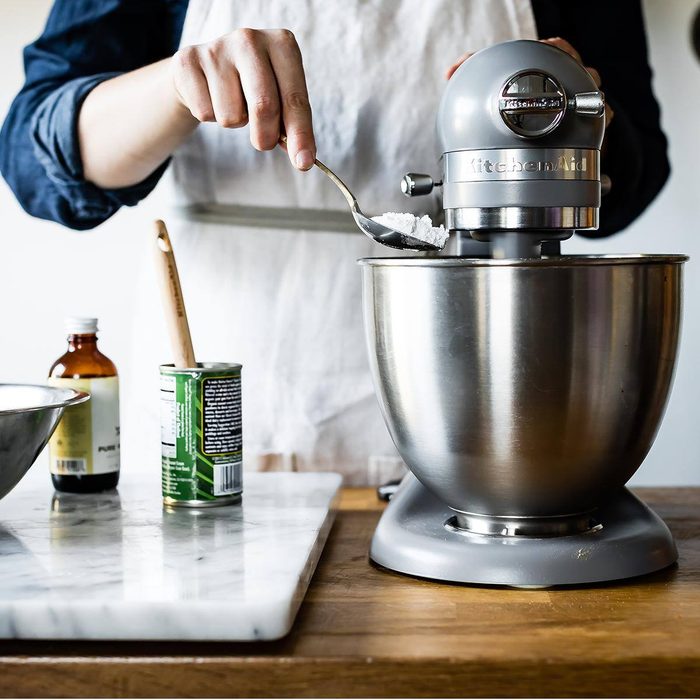
Starting on too high of a speed
We know you’re SO excited to bake something yummy. (Need inspiration? Try one of these delicious baking recipes we stole from grandma’s recipe box.) But there’s nothing worse than putting ingredients into a bowl and turning your stand mixer on high. Flour, milk, butter—or whatever ingredient you have in the bowl—will go all over the kitchen. Plus, you risk ruining the recipe with inaccurate measurements. Play it safe by always starting on the lowest speed and letting ingredients incorporate a little before cranking it up.
We tested the best stand mixers on the market. Find out which one’s best.

Not testing your bowl clearance
If you’ve never tested your bowl clearance, you could be making a major mistake. A too-high clearance results in gobs of unmixed batter, while a too-low clearance can scratch the bottom of your bowl. Luckily, there’s an easy fix. Look for a tiny screw on the head of your KitchenAid, and turn it a little bit at a time until the mixer has proper clearance. You can find the full instructions for adjusting your mixer here.
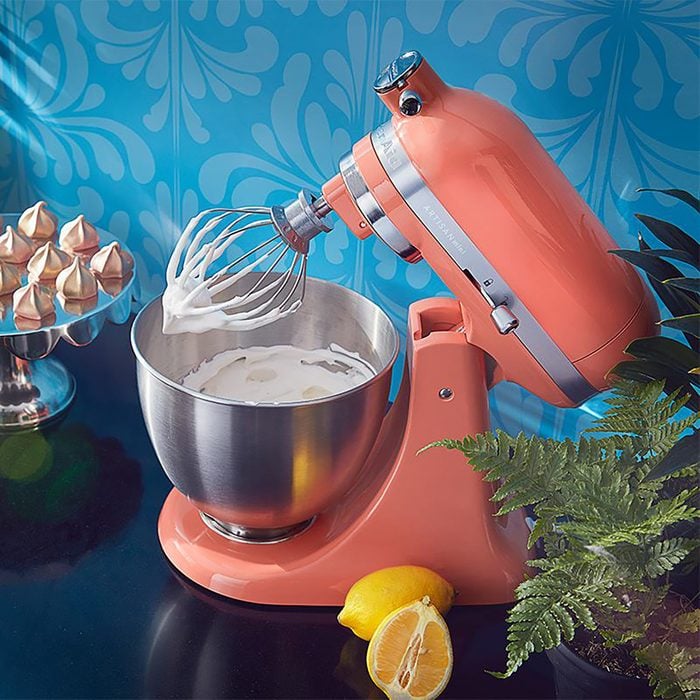
Not chilling the bowl
Whipped cream won’t, well, whip? Try tossing the bowl (and the attachment!) into the freezer for a few minutes. The extra hit of cold will help you reach perfectly stiff peaks fast. (Here’s how to get soft or stiff peaks every single time.)
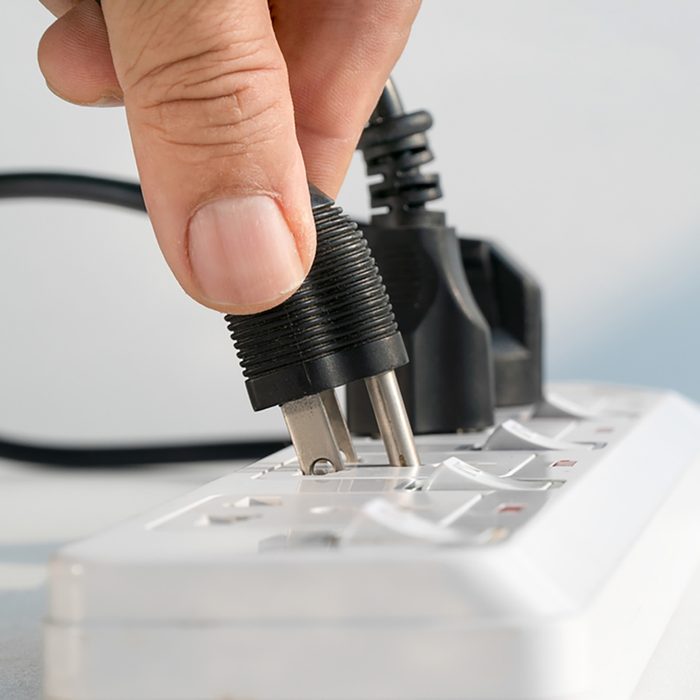
Plugging your mixer into a power strip
It’s tempting to plug all of your kitchen appliances into a power strip or surge protector. But some gadgets, like your KitchenAid, need to be plugged directly into a wall outlet. Since your stand mixer uses a considerable amount of energy, channeling power through a cord can increase your risk of fire or cause damage to your mixer’s motor.
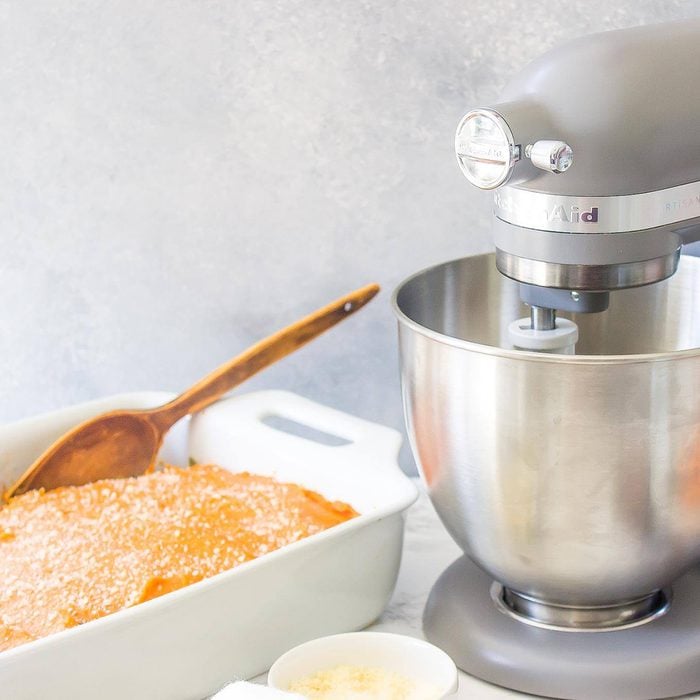
Using the mixer only for baking
If you only use your KitchenAid to whip up cakes and brownies, you’re missing out. The appliance is super versatile, and can be used to shred meat, mix dips, mash potatoes and much more.
(Psst! Here are 16 things you never thought to make in your KitchenAid.)
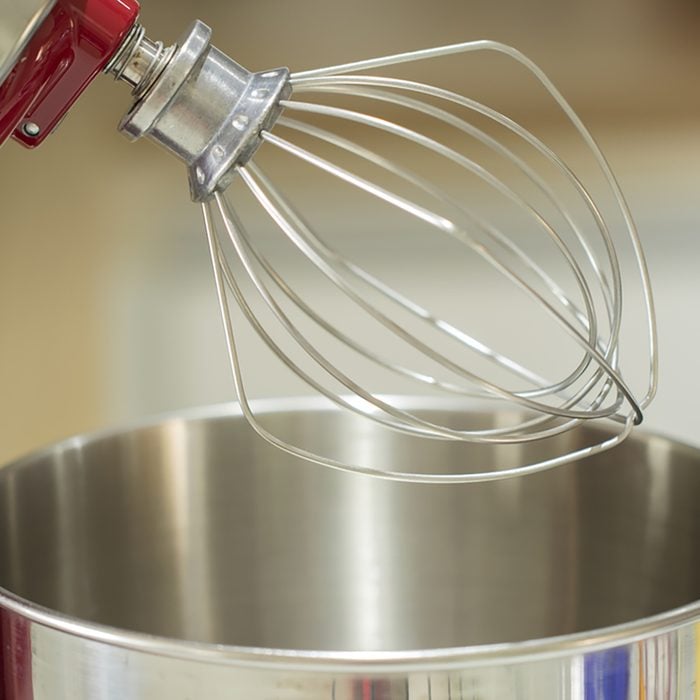
Using the wrong attachment
Though there are many KitchenAid attachments you can buy (These are our top attachment picks), the most common mixers are the flat beater, wire whip and dough hook. Each attachment is designed for a specific purpose: the flat beater is perfect for mixing together cookie dough and batter; the wire whip makes quick work of frosting, heavy cream and egg whites; and the dough hook expertly kneads bread dough. Using the wrong attachment on a recipe won’t necessarily hurt your machine, but it can shorten the life of or even break an attachment.
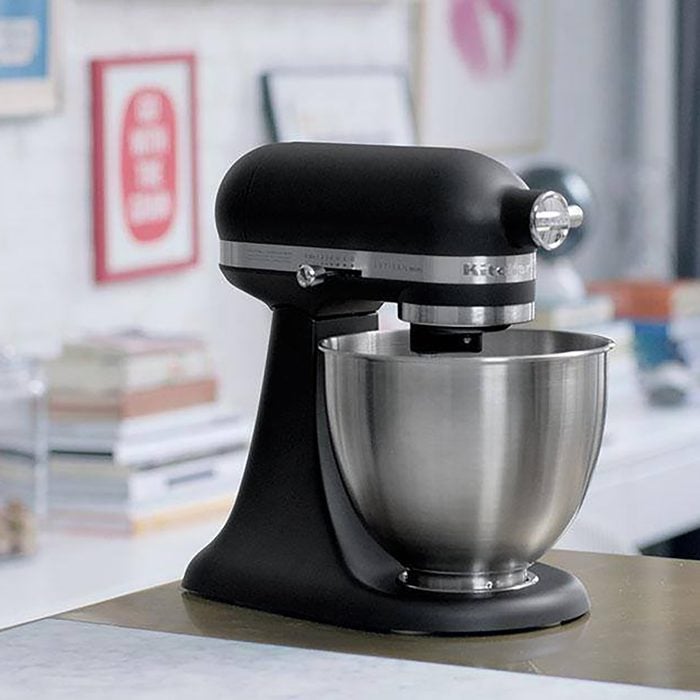
Storing your mixer improperly
Ideally you’d leave your stand mixer out on the counter, but when that’s not possible, store your appliance in a chest-height cabinet. When stashed too low or too high, you’re at a greater risk of dropping the mixer or injuring yourself. You also want to make sure the mixer is stored upright and not on its side.
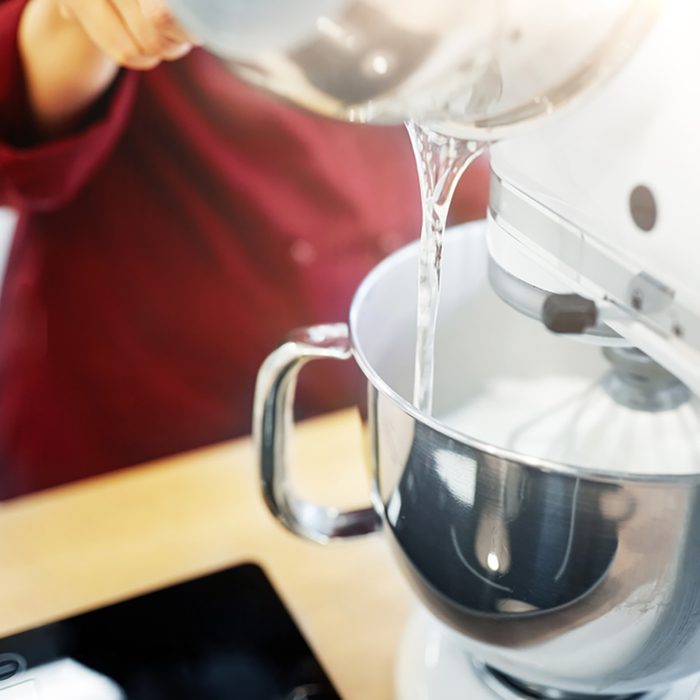
Not using a splash guard
If you’ve ever splashed cake batter on your shirt or ended up with egg whites in your hair, listen up. Even when you start a project on low speed, there’s still a chance for batter and dry ingredients to go flying around your kitchen. Invest in a splash guard to minimize the risk. The small piece covers the bulk of the bowl while leaving room for the mixing element, and a small chute makes it easy to add more ingredients. Check out the 10 best KitchenAid attachments you can buy.
Up Next: 9 KitchenAid Major Appliances We’d Be Happy to Have in Our Homes
